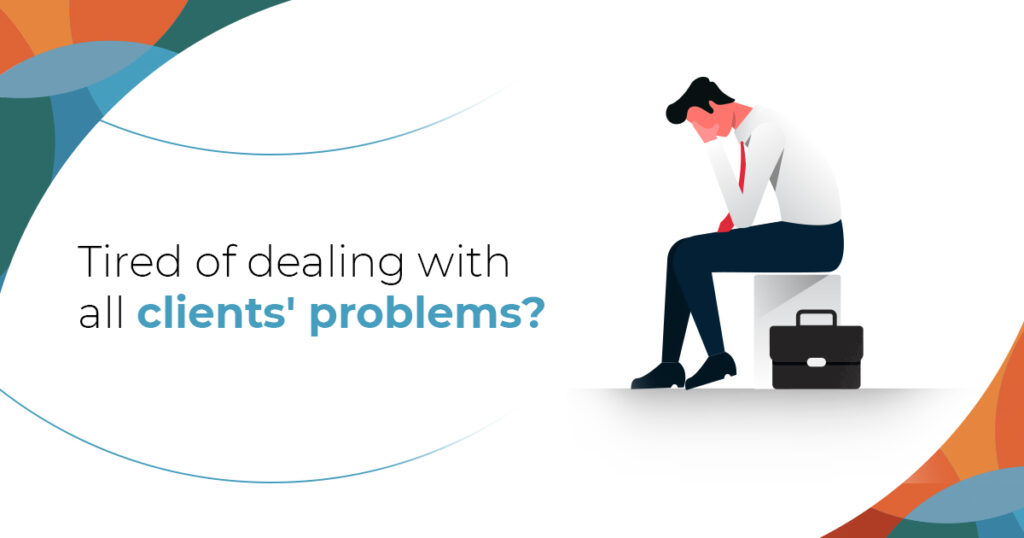We live in a world where everything moves fast, where everyone wants more sales, cheaper leads, and more efficient service delivery.
That’s all relevant and important, I won’t say no to that. But the biggest mindset shift your company can make is to stop seeing your fulfillment or customer success department as an expense, and start looking at it as a revenue-generating solution.
So if you want to understand more about customer acquisition costs, I want to challenge you to also look for Lifetime Value, Retention, and some other good profitable things.
In times of change and economic downturns, everyone wants to cut costs to ensure survival. When you see ad costs creeping up, this makes your margins thinner than I was before dinner.
That’s what I call looking for places where efficiency can be improved. As a systems engineer for 10 years, I had two main tasks:
- Guarantee maximum system efficiency
- Secure system effectiveness
But the order was the reverse. There is no point in increasing efficiency if your business is not effectively delivering what is supposed to be.
So before we go all in and find ways on how you can make your cost of delivery irrelevant, I want to remind you that acquiring a new customer can cost five times more than retaining an existing customer. Increasing customer retention by 5% can increase profits from 25-95%.
Mindblowing right? Let’s move on.
What factors affect your service delivery costs?
It will boil down to the model you’re using. If it’s a Done For You Offer (like an agency) or a Done With You Offer (Coaching or Consulting).
Every industry has its own standards, different talent requirements, client needs, and service levels.
I want to go beyond that. Independent of all the factors that you need to include when pricing your packages, I want to double down on increasing Lifetime Value and Profit Margins to a point that when you think about how much your team costs becomes irrelevant.
I want to share some solid and actionable strategies with you.
Strategies for optimizing client service costs
There are a number of things that will be considered a cost of delivering goods and services in your online business:
- Team (personnel)
- Tech stack (all the software needed)
- Training (keep increasing effectiveness, and efficiency, and drive innovation)
- Support
All of them can be made simpler, even without auditing your business. One way to think about it is to reward efficiency (elevating the constraint).
As an example, if you’re paying hourly, that doesn’t foster efficiency. Even the most loyal employees will understand that making their work more efficient won’t make them more money and will make them work more.
Even unconsciously they’ll cheat the system.
On the other end, if your team is comped on performance and bonused on efficiency, they want to be more efficient.
As an example, if you go with a CSM or AM model (Client Success Manager or Account Manager), they’ll be fully responsible for each account from start to finish.
If they’re paid a % of collections for each account they managed you will foster efficiency, meaning they will want to oversee more accounts and make more money.
At the same time, the overperformers will be paid more and correctly comped for their ethics and efforts. A small version of meritocracy.
This will also give you more tools and ideas on how to remove bad-culture fits that are underperforming.
Looping one more idea, if they’re comped for renewals and upsells, do you think they’ll care more? Will they be faster at identifying accounts that could be scaled into bigger goals faster?
If you look at the horizon the goals should be to have an efficient team, that is comped for being efficient and automating simple tasks that don’t generate revenue (like onboarding info, folder creation, you name it).
If you don’t have direction, here are some Industry Benchmarks for the typical online coaching offers:
- Referrals > 5% of total accounts managed
- Testimonials > 5% of total accounts managed
- Success Rates > 50% of total accounts managed
- Provide extra incentives for > 75% success rate
- Churn < 5% of total accounts managed
- For biz opp offers 5-7% is still acceptable
- Provide extra incentives for < 3% churn rate
- Retention (renew/upsell) > 30% of total accounts managed
- Should aim > 50% if it’s a DFY offer
- Provide extra incentives for > 50% retention rate
With numbers like this, you can rest assured that customer acquisition costs, or your service delivery costs, are less relevant because of the high Lifetime Value of each client.
Under the Microscope (Case Study)
This is an example of a client of ours. They doubled down on creating profits from their service delivery and existing clients, instead of focusing on cutting costs.
This allowed them to go from:
- 6% churn to 1% churn, saving them ~80k$
- 5% retention to 30% retention, making them ~150k$ backend revenue
- 1 to 3 referrals a month, making them ~48k$ front-end revenue
This was achieved in around 4 months, making them more than 250k.
The best thing I see here is not a fad or q quick fading tactics. This is an evergreen Fulfillment Funnel™ (our fancy IP), that will keep generating results like this.
And how much they pay the team becomes irrelevant, as their service delivery costs are around 5%.
Want to learn how to dial in your customer success teams and hire top CSM and AMs?
Click here and find a time to chat with us, no strings attached.



